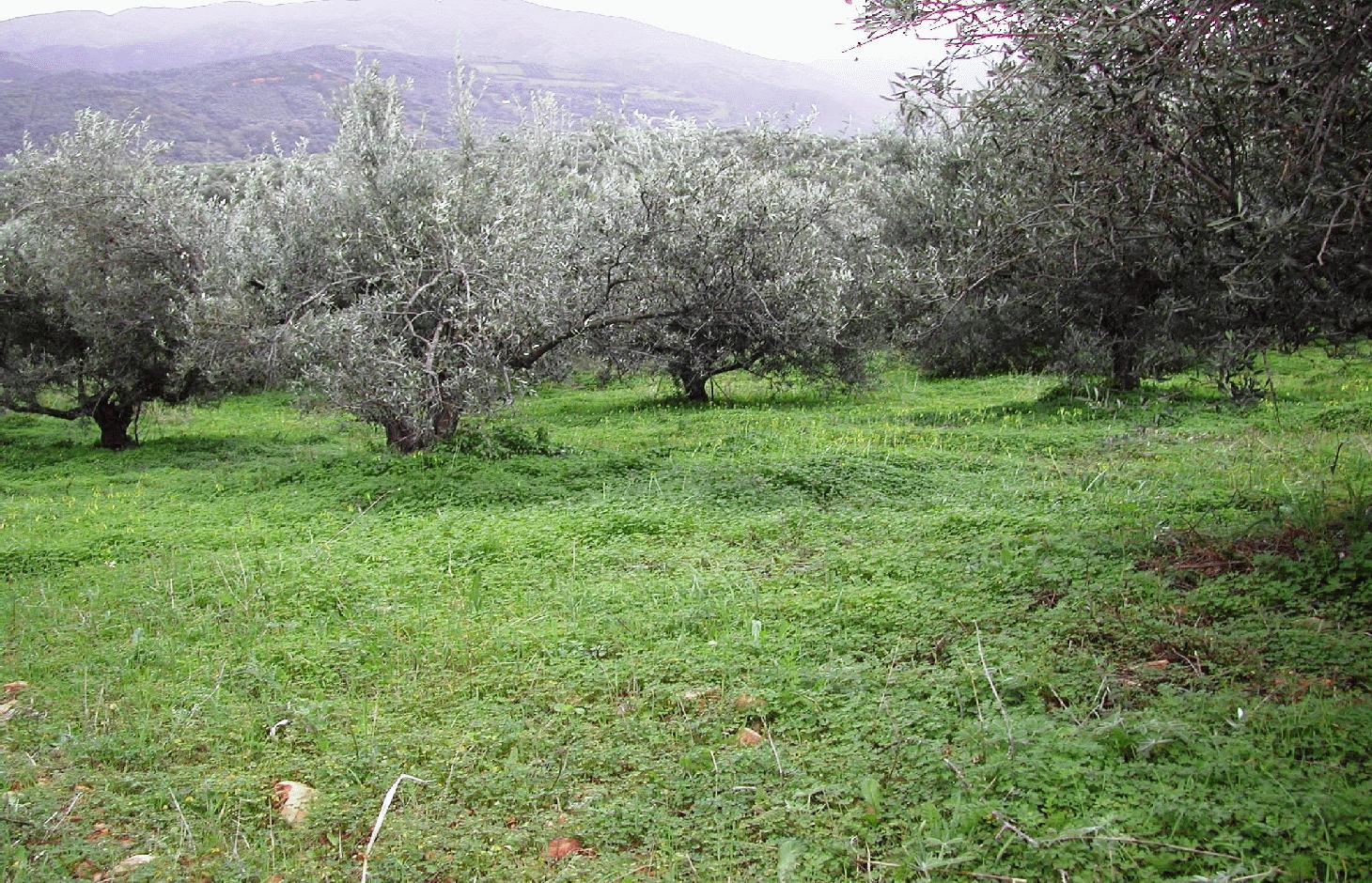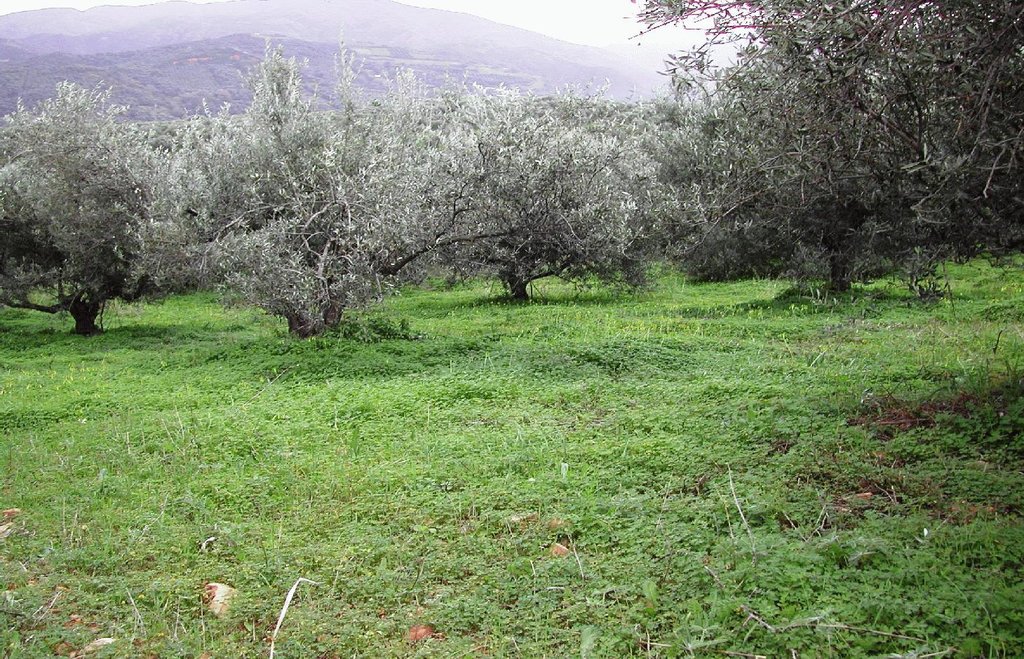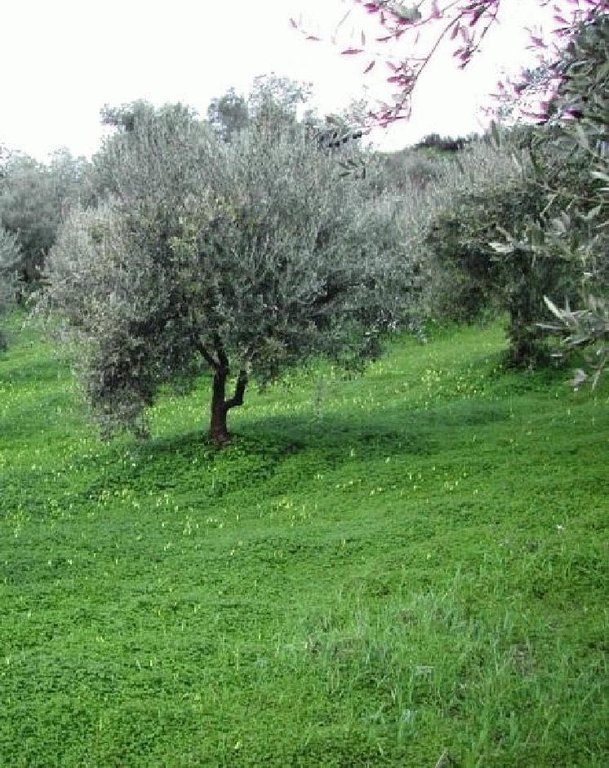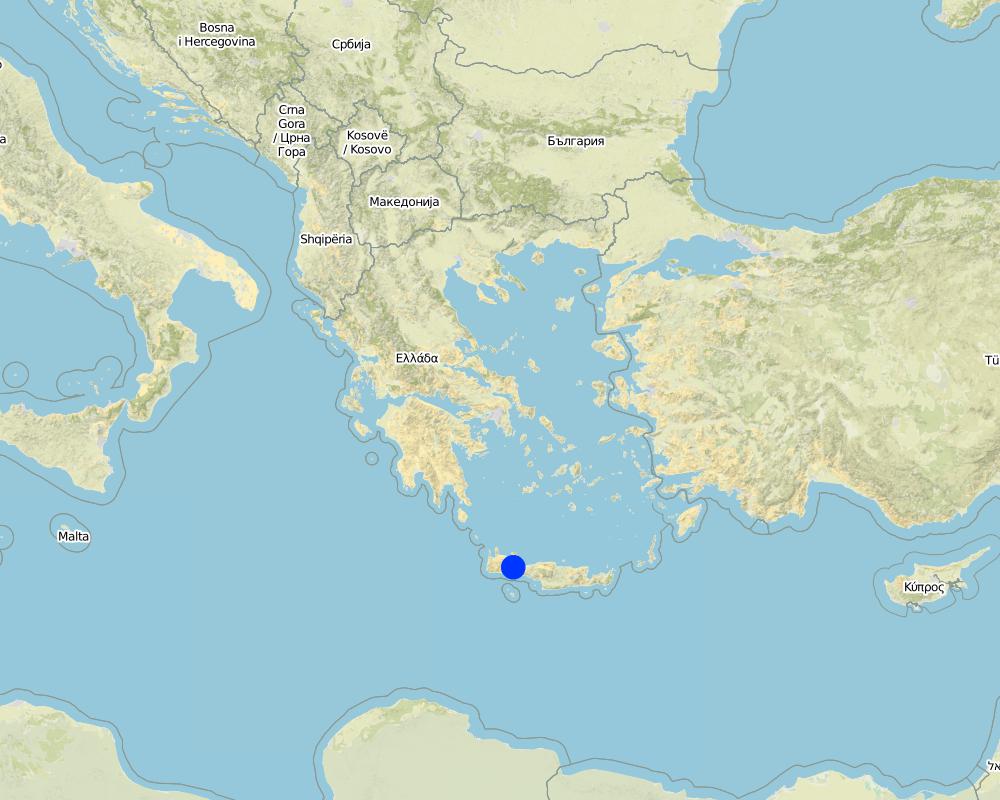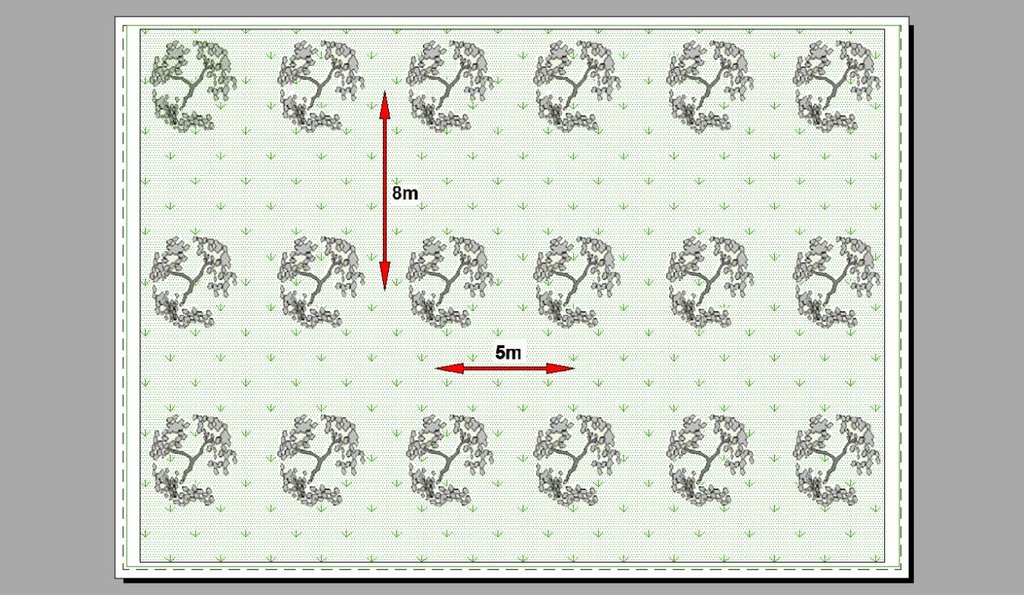Olive groves under no-tillage operations [Greece]
- Creation:
- Update:
- Compiler: Costas Kosmas
- Editor: –
- Reviewers: Deborah Niggli, Alexandra Gavilano
Ακαλλιέργεια (Greek)
technologies_1035 - Greece
View sections
Expand all Collapse all1. General information
1.2 Contact details of resource persons and institutions involved in the assessment and documentation of the Technology
SLM specialist:
Ioannis Mentzidakis
National Agricultural Research Foundation - NAGREF - Institute for Olive Tree and Subtropical Plants of Chania
Greece
Name of project which facilitated the documentation/ evaluation of the Technology (if relevant)
DESIRE (EU-DES!RE)Name of the institution(s) which facilitated the documentation/ evaluation of the Technology (if relevant)
Agricultural University of Athens (AUAb) - GreeceName of the institution(s) which facilitated the documentation/ evaluation of the Technology (if relevant)
National Agricultural Research Foundation (NAGREF) - Greece1.3 Conditions regarding the use of data documented through WOCAT
The compiler and key resource person(s) accept the conditions regarding the use of data documented through WOCAT:
Ja
1.5 Reference to Questionnaire(s) on SLM Approaches (documented using WOCAT)
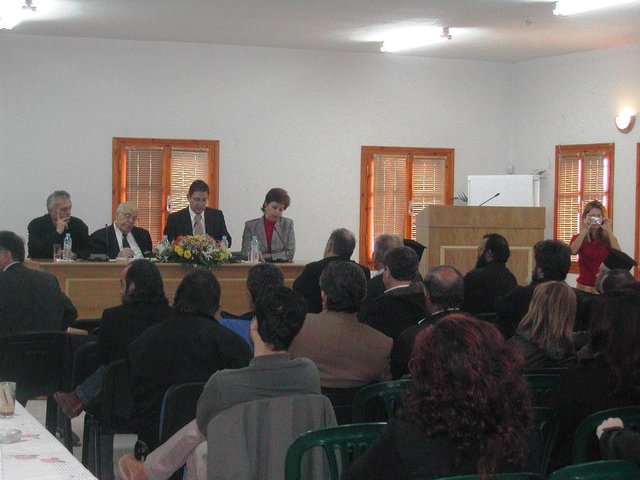
Sustainable development of olive groves I [Greece]
Sustainable development of olive groves by applying no tillage operations
- Compiler: Costas Kosmas
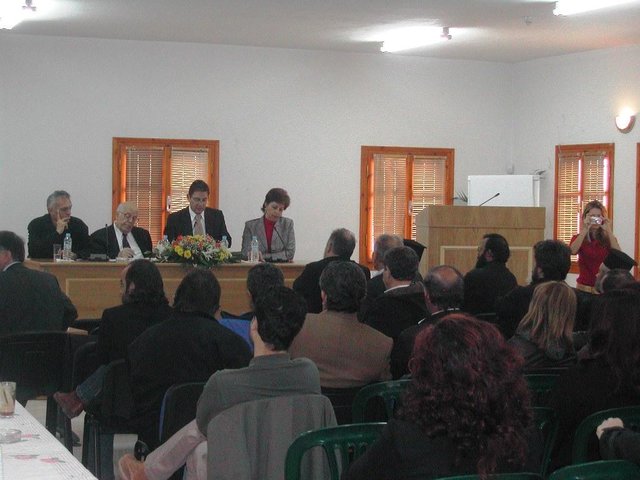
Sustainable development of olive groves II [Greece]
Sustainable development of olive groves by applying no tillage operations and plastic nets on the soil surface
- Compiler: Costas Kosmas
2. Description of the SLM Technology
2.1 Short description of the Technology
Definition of the Technology:
Olive groves under no tillage and no herbicide application.
2.2 Detailed description of the Technology
Description:
Sustainable farming may include several measures for protecting natural resources. One measure, that of no-tillage, relates to reduced soil erosion. This may have favourable effects on soil aggregation and protection from soil crusting and soil erosion. In a no-tillage system, the residues are concentrated on the surface of the soil, which enhances aggregate stability and protects the soil from erosion.
Purpose of the Technology: Sustainable farming may include several measures for protecting natural resources. One of the applied measures in the context of sustainable farming, related to reduction of soil erosion, is minimum tillage or no tillage operations. No tillage may have favourable effects on soil aggregation and protection of soil crusting and soil erosion. Maximum soil degradation occurs when soil is tilled with a mouldboard plough, followed by disking. In no-tillage system, the residues are concentrated on the surface of the soil enhancing aggregate stability and protecting the soil from erosion.There is no any extra cost for application of the Technology. In the opposite, farm income increases since cost production is decreased without any decrease in olive oil production.
Establishment / maintenance activities and inputs: The most frequently used cover crop is Oxalis pescaprae, a species considered as a weed but with a positive effect on soil and water conservation. It is left to grow during winter to improve water infiltration into the soil and to help prevent soil erosion. Owing to its high sensitivity to drought, Oxalis tends to reach wilting point in late spring due to lack of water in the upper soil layer. Disc-ploughing once every four to five years is necessary to destroy the perennial vegetation and incorporate fertilizers and plant residues into the soil. There is no extra cost involved in applying the technology. In fact, farm income increases, since production costs decrease without any reduction in olive oil production.
Natural / human environment: This practice is common locally and was established 30 years ago by the collaboration of national specialists and land users. It has been applied in a variety of natural and human environmental conditions typical of the Mediterranean region.
2.3 Photos of the Technology
2.5 Country/ region/ locations where the Technology has been applied and which are covered by this assessment
Country:
Greece
Region/ State/ Province:
Kissamos province
Further specification of location:
Chania-Crete
Comments:
Total area covered by the SLM Technology is 532 km2.
Map
×2.6 Date of implementation
If precise year is not known, indicate approximate date:
- 10-50 years ago
2.7 Introduction of the Technology
Specify how the Technology was introduced:
- through land users' innovation
3. Classification of the SLM Technology
3.2 Current land use type(s) where the Technology is applied

Cropland
- Tree and shrub cropping
Tree and shrub cropping - Specify crops:
- olive
- Oxalis pescaprae (flower but invasive)
Number of growing seasons per year:
- 1
Specify:
Longest growing period in days: 150Longest growing period from month to month: November to April
Comments:
Major land use problems (compiler’s opinion): high soil erosion rates and a decrease in groundwater recharge
Major land use problems (land users’ perception): increasing production costs when the technique is not applied
Livestock is grazing on crop residues
3.4 Water supply
Water supply for the land on which the Technology is applied:
- mixed rainfed-irrigated
3.5 SLM group to which the Technology belongs
- improved ground/ vegetation cover
- minimal soil disturbance
- integrated pest and disease management (incl. organic agriculture)
3.6 SLM measures comprising the Technology

agronomic measures
- A3: Soil surface treatment

management measures
- M4: Major change in timing of activities
Comments:
Main measures: agronomic measures
Secondary measures: management measures
Type of agronomic measures: retaining more vegetation cover, mulching, mineral (inorganic) fertilizers, zero tillage / no-till
3.7 Main types of land degradation addressed by the Technology

soil erosion by water
- Wt: loss of topsoil/ surface erosion
Comments:
Main type of degradation addressed: Wt: loss of topsoil / surface erosion
Main causes of degradation: soil management (displacement of soil by ploughing)
Secondary causes of degradation: labour availability
3.8 Prevention, reduction, or restoration of land degradation
Specify the goal of the Technology with regard to land degradation:
- reduce land degradation
Comments:
Main goals: mitigation / reduction of land degradation
4. Technical specifications, implementation activities, inputs, and costs
4.1 Technical drawing of the Technology
Technical specifications (related to technical drawing):
Olive groves occur widely throughout Crete (Greece). One of the main cultivation practices adopted recently is minimum or no tillage. Under this land management practice, weeds are allowed to grow, covering and protecting the soil surface from raindrop impact. The most widely distributed weed is Oxalis pescaprae, a plant species that has positive effects on soil and water conservation. Oxalis grows during winter improving water infiltration into the soil and helping to prevent soil erosion. Owing to its high sensitivity to drought, Oxalis reaches wilting point during late spring due to a lack of soil water in the upper soil layer. The plant is indigenous to South Africa and highly invasive. The plant has a reputation for being very difficult to eradicate once it has become established. Olive trees, planted close together, partially prevent the growth of understorey vegetation. In the Crete study area, rows of olive trees are spaced at intervals of 8 m and trees are planted 5 m apart in the rows
Location: Voukolies. Chania
Technical knowledge required for field staff / advisors: moderate
Technical knowledge required for land users: low
Main technical functions: control of dispersed runoff: retain / trap
Secondary technical functions: increase of surface roughness
Mulching
Material/ species: oxalis sp
Author:
C. Kosmas
4.3 Establishment activities
| Activity | Timing (season) | |
|---|---|---|
| 1. | Removal of weeds if they interfere significantly with the collection of the olive crop |
4.4 Costs and inputs needed for establishment
Comments:
Duration of establishment phase: 5 month(s)
4.5 Maintenance/ recurrent activities
| Activity | Timing/ frequency | |
|---|---|---|
| 1. | no maintenance |
4.6 Costs and inputs needed for maintenance/ recurrent activities (per year)
Comments:
Machinery/ tools: no machinery needed
4.7 Most important factors affecting the costs
Describe the most determinate factors affecting the costs:
No factors affect costs since Oxalis grows in the area under natural conditions
5. Natural and human environment
5.1 Climate
Annual rainfall
- < 250 mm
- 251-500 mm
- 501-750 mm
- 751-1,000 mm
- 1,001-1,500 mm
- 1,501-2,000 mm
- 2,001-3,000 mm
- 3,001-4,000 mm
- > 4,000 mm
Agro-climatic zone
- semi-arid
Thermal climate class: temperate
5.2 Topography
Slopes on average:
- flat (0-2%)
- gentle (3-5%)
- moderate (6-10%)
- rolling (11-15%)
- hilly (16-30%)
- steep (31-60%)
- very steep (>60%)
Landforms:
- plateau/plains
- ridges
- mountain slopes
- hill slopes
- footslopes
- valley floors
Altitudinal zone:
- 0-100 m a.s.l.
- 101-500 m a.s.l.
- 501-1,000 m a.s.l.
- 1,001-1,500 m a.s.l.
- 1,501-2,000 m a.s.l.
- 2,001-2,500 m a.s.l.
- 2,501-3,000 m a.s.l.
- 3,001-4,000 m a.s.l.
- > 4,000 m a.s.l.
5.3 Soils
Soil depth on average:
- very shallow (0-20 cm)
- shallow (21-50 cm)
- moderately deep (51-80 cm)
- deep (81-120 cm)
- very deep (> 120 cm)
Soil texture (topsoil):
- medium (loamy, silty)
- fine/ heavy (clay)
Topsoil organic matter:
- medium (1-3%)
- low (<1%)
5.4 Water availability and quality
Ground water table:
> 50 m
Availability of surface water:
good
Water quality (untreated):
good drinking water
5.5 Biodiversity
Species diversity:
- high
5.6 Characteristics of land users applying the Technology
Market orientation of production system:
- mixed (subsistence/ commercial)
Off-farm income:
- less than 10% of all income
Relative level of wealth:
- average
- rich
Individuals or groups:
- individual/ household
Level of mechanization:
- mechanized/ motorized
Gender:
- men
Indicate other relevant characteristics of the land users:
Land users applying the Technology are mainly common / average land users
Population density: 10-50 persons/km2
Annual population growth: 1% - 2%
75% of the land users are average wealthy and own 90% of the land.
5.7 Average area of land used by land users applying the Technology
- < 0.5 ha
- 0.5-1 ha
- 1-2 ha
- 2-5 ha
- 5-15 ha
- 15-50 ha
- 50-100 ha
- 100-500 ha
- 500-1,000 ha
- 1,000-10,000 ha
- > 10,000 ha
Is this considered small-, medium- or large-scale (referring to local context)?
- small-scale
5.8 Land ownership, land use rights, and water use rights
Land ownership:
- company
- individual, titled
Land use rights:
- open access (unorganized)
Water use rights:
- communal (organized)
5.9 Access to services and infrastructure
health:
- poor
- moderate
- good
education:
- poor
- moderate
- good
technical assistance:
- poor
- moderate
- good
markets:
- poor
- moderate
- good
roads and transport:
- poor
- moderate
- good
financial services:
- poor
- moderate
- good
6. Impacts and concluding statements
6.1 On-site impacts the Technology has shown
Socio-economic impacts
Production
land management
Water availability and quality
demand for irrigation water
Income and costs
farm income
Comments/ specify:
2200-2500€/ha
Other socio-economic impacts
Hindered farm operations
Socio-cultural impacts
conflict mitigation
Improved livelihoods and human well-being
Comments/ specify:
Increase in farmers income and reduction the off-site effects
Ecological impacts
Water cycle/ runoff
water quantity
surface runoff
Soil
soil moisture
soil loss
soil crusting/ sealing
soil compaction
6.2 Off-site impacts the Technology has shown
downstream flooding
groundwater/ river pollution
6.3 Exposure and sensitivity of the Technology to gradual climate change and climate-related extremes/ disasters (as perceived by land users)
Gradual climate change
Gradual climate change
| Season | increase or decrease | How does the Technology cope with it? | |
|---|---|---|---|
| annual temperature | increase | not known |
Climate-related extremes (disasters)
Meteorological disasters
| How does the Technology cope with it? | |
|---|---|
| local rainstorm | well |
| local windstorm | not known |
Climatological disasters
| How does the Technology cope with it? | |
|---|---|
| drought | not known |
Hydrological disasters
| How does the Technology cope with it? | |
|---|---|
| general (river) flood | not known |
Other climate-related consequences
Other climate-related consequences
| How does the Technology cope with it? | |
|---|---|
| reduced growing period | not known |
| arid climatic conditions | not well |
6.4 Cost-benefit analysis
How do the benefits compare with the establishment costs (from land users’ perspective)?
Short-term returns:
positive
Long-term returns:
positive
How do the benefits compare with the maintenance/ recurrent costs (from land users' perspective)?
Short-term returns:
positive
Long-term returns:
positive
6.5 Adoption of the Technology
If available, quantify (no. of households and/ or area covered):
2650
Of all those who have adopted the Technology, how many did so spontaneously, i.e. without receiving any material incentives/ payments?
- 51-90%
Comments:
55% of land user families have adopted the Technology with external material support
1850 land user families have adopted the Technology with external material support
100% of land user families have adopted the Technology without any external material support
800 land user families have adopted the Technology without any external material support
There is a moderate trend towards spontaneous adoption of the Technology
6.7 Strengths/ advantages/ opportunities of the Technology
| Strengths/ advantages/ opportunities in the land user’s view |
|---|
|
Production costs can be cut, but may create problems for olive harvesting How can they be sustained / enhanced? the necessity to cut weeds during harvesting |
| Strengths/ advantages/ opportunities in the compiler’s or other key resource person’s view |
|---|
|
Technologies for conserving soil and water resources and combating desertification in Crete mainly relate to land management. Olive groves are widespread on the island as a result of the importance of olive oil for everyday cooking. Furthermore, olive groves can survive adverse weather and soil conditions providing a significant income for farmers for a relatively low labour input. Land management practices have been adopted in the area based on tradition and knowledge transfer by local institutes and specialists. No-tillage land management practice with olives can be considered as an important technique to protect against land degradation and desertification and increase farmers’ incomes How can they be sustained / enhanced? education of farmers |
6.8 Weaknesses/ disadvantages/ risks of the Technology and ways of overcoming them
| Weaknesses/ disadvantages/ risks in the land user’s view | How can they be overcome? |
|---|---|
| The field is ‘clean’ in readiness for harvesting | the necessity to cut weeds during harvesting |
| Weaknesses/ disadvantages/ risks in the compiler’s or other key resource person’s view | How can they be overcome? |
|---|---|
| A slight decrease in water availability for the growing trees | no solution to this problem |
7. References and links
7.1 Methods/ sources of information
Links and modules
Expand all Collapse allLinks

Sustainable development of olive groves I [Greece]
Sustainable development of olive groves by applying no tillage operations
- Compiler: Costas Kosmas

Sustainable development of olive groves II [Greece]
Sustainable development of olive groves by applying no tillage operations and plastic nets on the soil surface
- Compiler: Costas Kosmas
Modules
No modules


